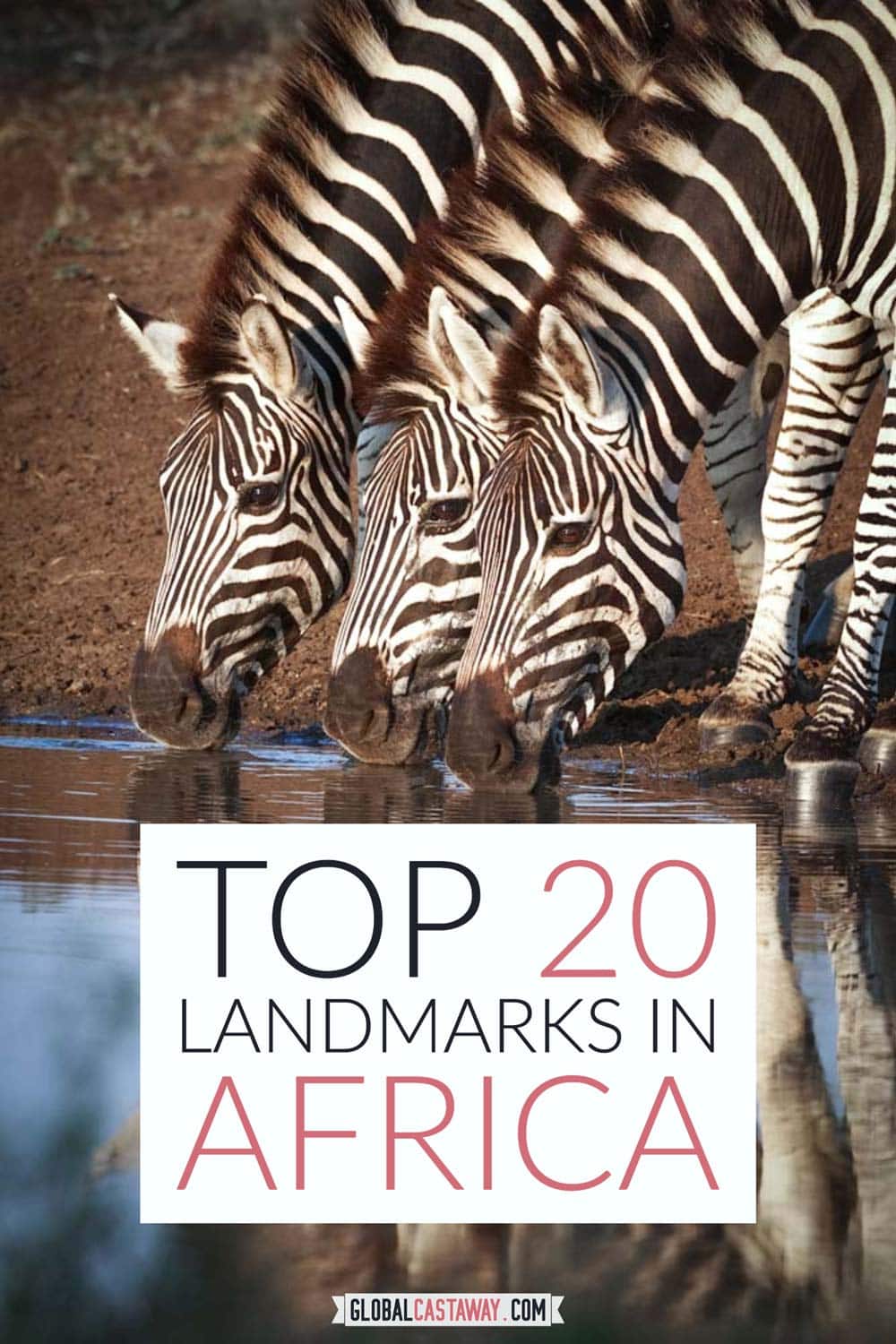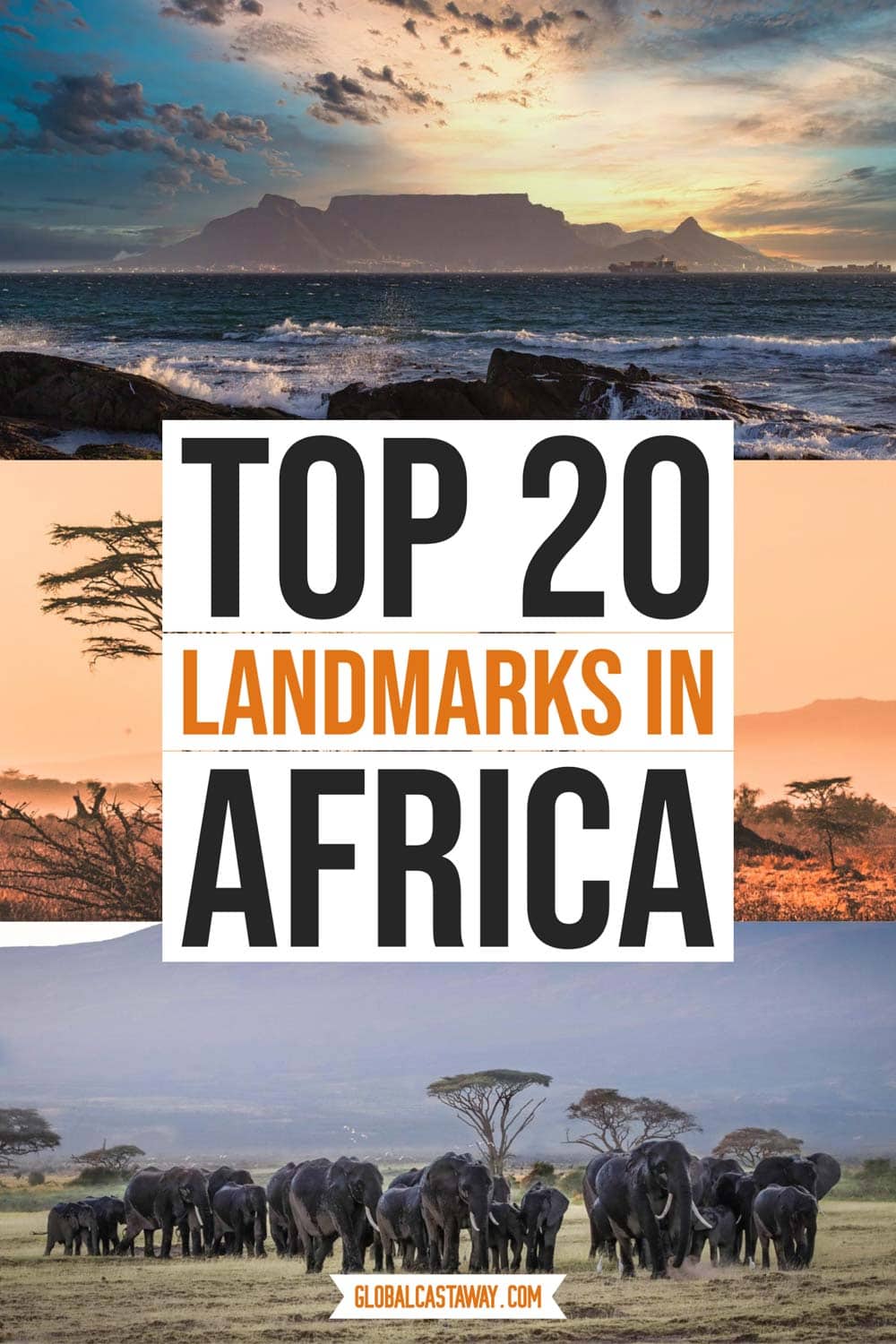Exploring the biggest landmarks in Africa feels more like exploring two entirely different continents. While the enigmatic Northern Africa region is more about authentic culture and historical attractions, the southern part of the continent amazes us with one-of-a-kind wildlife and stunning natural wonders. Add quirky Madagascar and the legendary Sahara desert to the mix, and you have a recipe for the adventure of a lifetime!
Africa may be one of the least traveled-in continents, and the tourist paths there are still a bit rough at times. The authentic sights and experiences, however, totally make up for the slight inconveniences. I’m sure that after you examine all the incredible African landmarks on the list below, your wanderlust will be stronger than ever, and the hottest continent will find a permanent place on your bucket list.
Are you ready to start?
Here are the top 20 most significant landmarks in Africa!
Giza Plateau, Egypt
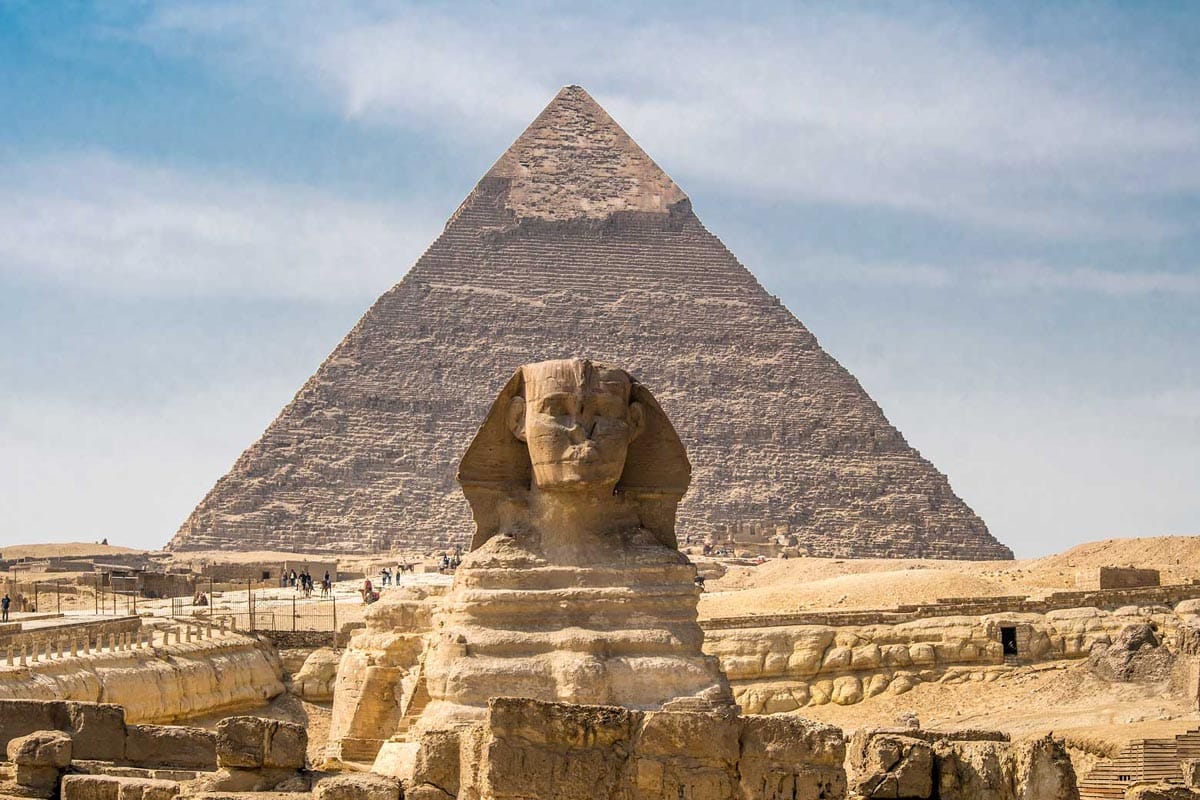
We can’t start the top African landmarks with anything else but the Giza Plateau. Home to the biggest and most recognizable historical attractions in the world – the Pyramids and the Great Sphinx.
The last surviving of the seven ancient wonders, the Pyramids of Giza, were created around roughly 2550 to 2490 B.C. to serve as grand monuments over the pharaoh’s tombs. They are one of the most impressive man-made constructions of all time, and seeing them in person is just something you have to do in this life. No excuses; you just have to do it.
As for the Sphinx, its purpose is still up for debate. In ancient Egypt, the sphinxes were spiritual guardians, therefore prompting the theory that the Great Sphynx is there to guard the Great Pyramid (make sense). In the early 1900s, however, another building (the Sphinx Temple) was discovered, right in front of the Sphinx, casting some doubts over the dominant theory.
No matter. The purpose, the Great Sphinx of Giza is one of the most significant monuments on the globe today, and it’s totally worth a visit.
Valley of the Kings, Egypt
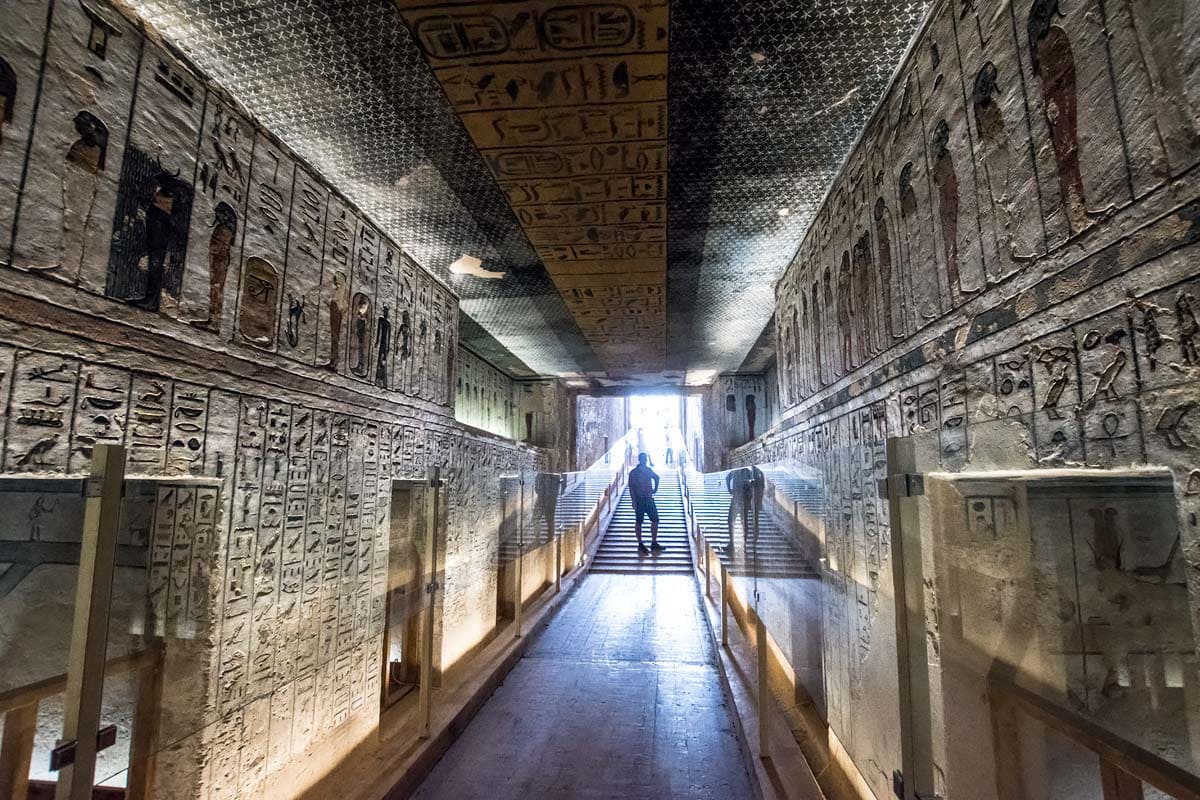
Would I surprise you if I tell you there’s a more spectacular place in Egypt than the Giza Plateau? This may sound a bit controversial, but yeah, the Valley of the Kings in Luxor is so mind-blowingly impressive it surpasses even the Pyramids.
What exactly the Valley of the Kings is?
Once the ancient pharaohs figured out that the giant monuments over their treasure-filled crypts act as a beacon for all the thieves in the kingdom, they started digging secret tombs inside a wasteland valley. They were so secretive about it that even the pharaohs next in line didn’t know the exact location of their ancestor’s final resting place.
For a period of nearly 500 years, from the 16th to 11th century B.C., rock-cut tombs were excavated, and more of them stayed intact till – well – today. Lack of air and light preserved the crypts so well that the ancient bas-reliefs look like being made just last week.
Offering world-class highlights like Tutankhamen’s tomb and his mummified body, the Valley of the Kings is undoubtedly one of the most famous landmarks in Africa.
Abu Simbel Temple, Egypt
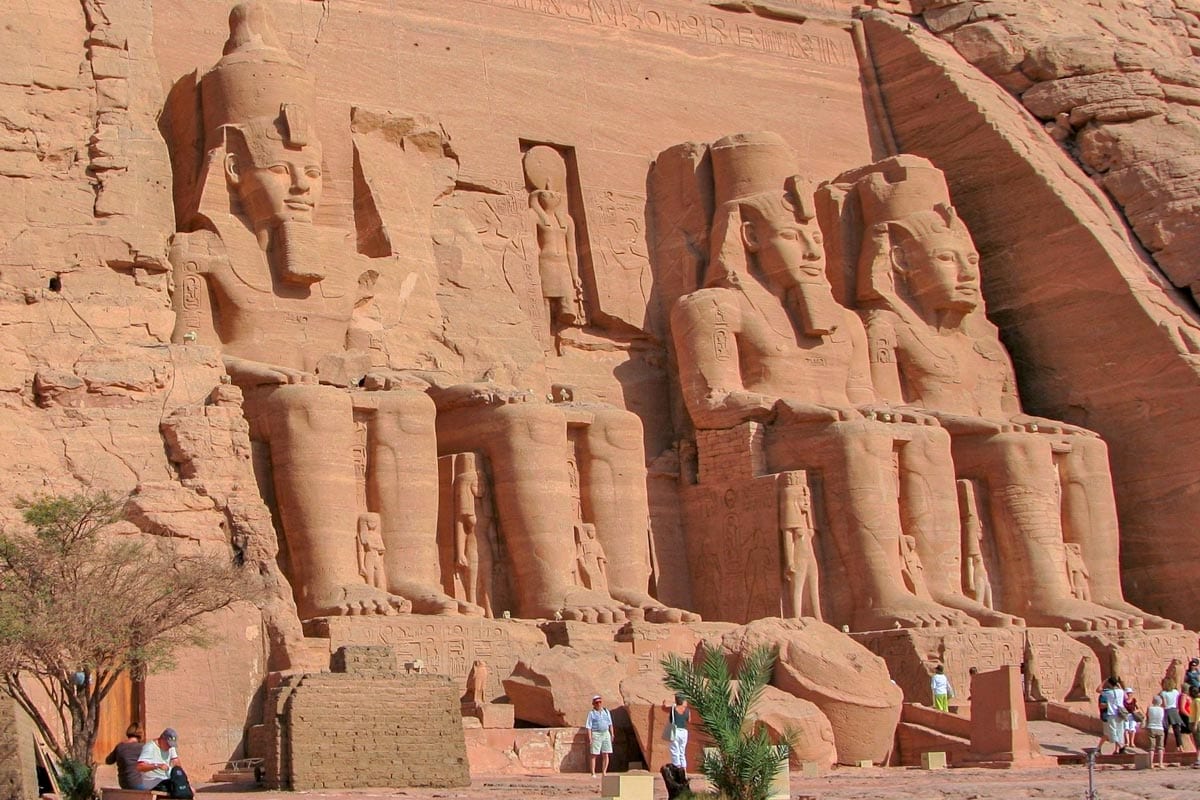
We stay in Egypt to embark on a journey down the Nile River all the way to the Sudan Border, where we find one of the most impressive ancient temples on the globe.
The Abu Simbel Temple was constructed during the reign of King Ramses II sometime in the 1200 B.C. time period.
I keep on saying temple, but in reality, the Abu Simbel Temple consists of two different temples, one dedicated to King Ramses II and one to his wife, beloved Queen Nefertari. Both temples were cut into solid rock to celebrate Ramses’ victory over the Hittites in the Kadish battle (1274 B.C.)
A few days long Nile cruise combined with the temple exploration gives so much ancient-Egyptian vibe that you just can’t leave it out of your African bucket list.
Red Sea

Situated between the African continent and the Arabian peninsula, the Red Sea is among the world’s most remarkable seas. An important European trade route, this peculiarly named sea is also one of the most popular diving spots on the globe.
And speaking about its name, it’s not entirely clear how it came to be. One of the theories suggests it’s named after Egypt, which was known as the Red Land at the time, while another claims it’s derived from the unique algae that give some of the sea waters an odd orange-ish hue.
Marrakech Medina, Morocco

We are out of Egypt, but we remain in Northern Africa to discover the next item on our list – the most authentic part of one of the most authentic cities – the enigmatic Marrakech Medina. Frequent participant on many travel bucket lists, Marrakech is like a romanticized symbol of everything Arabic.
Snake charmers, monkey tamers, and fortune-tellers combine with colorful spices and the exotic foreign smells of chaotic Djemaa el Fna square to paint a picture of an Aghraba-like town (Aladin’s hometown) that seductively invites you to discover its labyrinth-shaped heart.
A UNESCO World Heritage Site since 1985, today the Marrakech Medina may be a bit touristy, but it’s still a sight to be seen.
Chefchaouen, Morocco

We continue our exploration of the most famous landmarks in Africa with a city tour. But not just any city. Chefchaouen is one of the oddest and most picturesque towns you’ll ever set your foot in.
Believe it or not, everything in this small Moroccan mountain town is painted in bright baby-blue color. Walls, buildings, doors, even the streets, everything is blue.
This, of course, turned the weird-to-pronounce city into an Instagram superstar that welcomes millions of tourists each year.
Having spent quite some time there, I can guarantee that Chefchaouen is not one of those attractions that look good only in pictures, but is indeed the real deal.
Sahara Desert
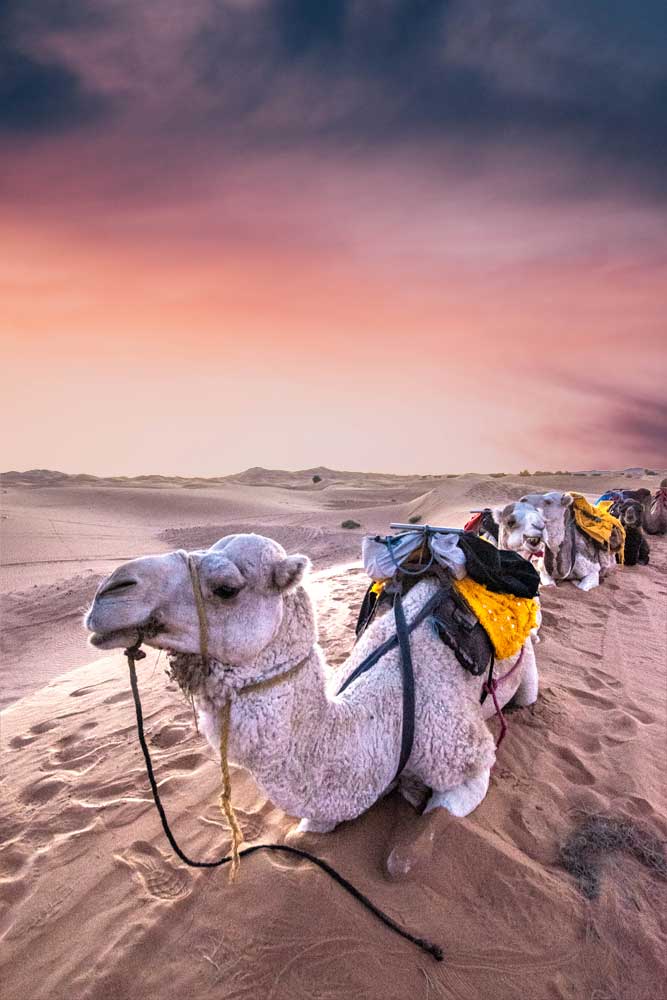
We’re slowly moving to the continent’s lush jungle heart, but before we reach it, we have to cross not just one of the biggest African landmarks, but literally the biggest one, the Sahara Desert.
The largest desert on the globe (real sand desert, not the Arctic/Antarctic one) is a mesmerizing place that’s guaranteed to create a fond memory that will last forever. Nothing can beat the experience of a camel ride under billion of stars, waiting for the sun to rise. It’s an incredibly chilly adventure, but still, nothing, absolutely nothing, can beat it.
Virunga Mountains, Rwanda, Uganda, and D.R Congo
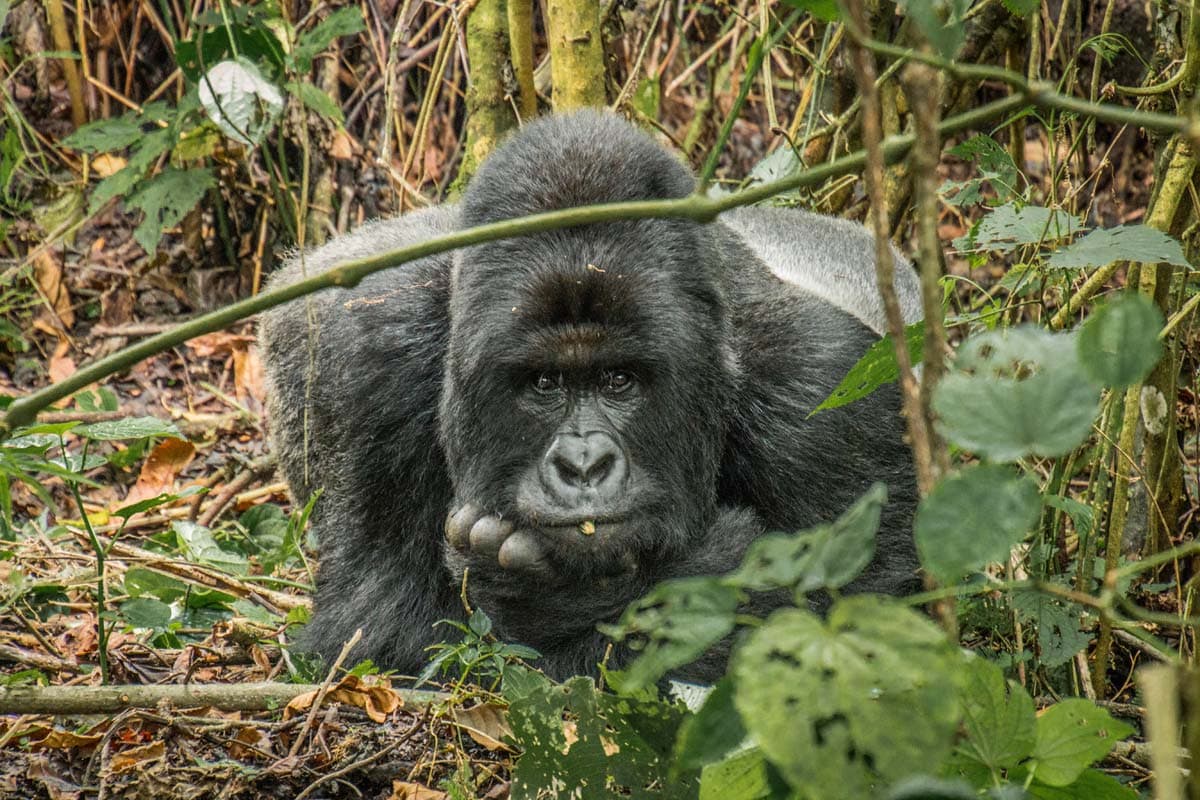
To find our next landmark, we travel to the center of the African continent where extending about 50 miles (80 km) along the borders of the Democratic Republic of the Congo, Rwanda, and Uganda; we find the Virunga Mountains.
What’s so special about the Virunga mountains?
The mountains themselves are nothing that special; their inhabitants, however, are a rare treat worthy only for the most adventurous travelers.
I’m talking about the mystical mountain gorillas, of course.
With only about 1,000 left in the wild, the mountain gorillas are among the most endangered species on the planet, so finding them won’t be that easy. If you manage to do it, though, you are up for a hypnotizing experience that’s guaranteed to leave a robust ever-lasting mark.
See Also: Top 20 Biggest Landmarks in Europe
Victoria Falls, Zimbabwe
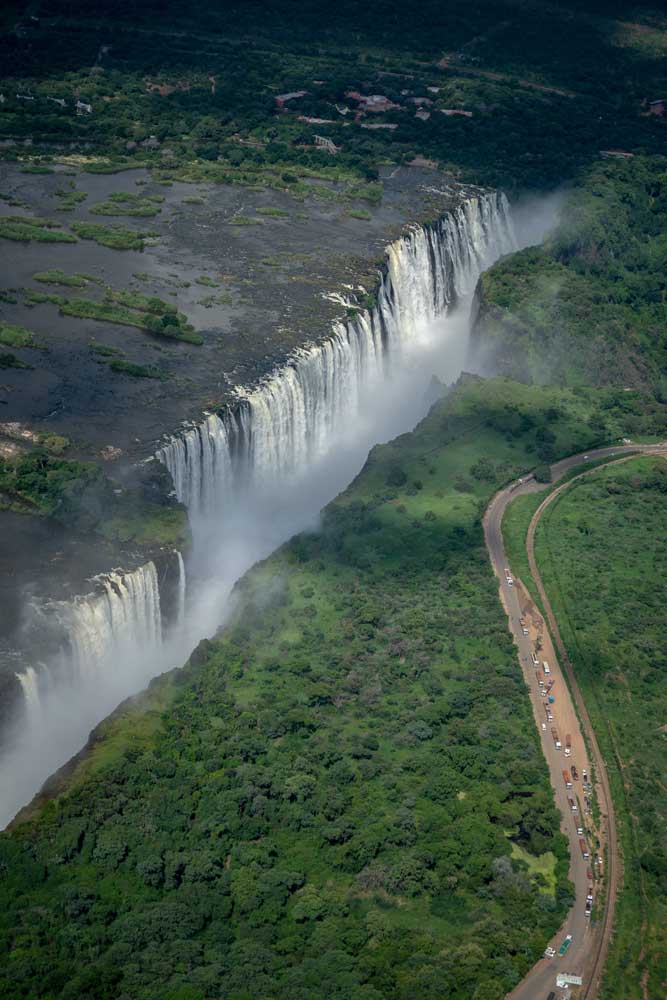
It’s time to explore one of the Edenic natural landmarks I mentioned at the beginning. Victoria Falls is not the widest or the tallest waterfall; it’s merely the world’s largest waterfall. It was re-discovered in 1855 by the famous British explorer David Livingstone who named it after the British monarch at the time, Queen Victoria.
Spread between Zimbabwe and Zambia, Victoria Falls is considered one of the Seven Natural Wonders of The World.
And to make it even more impressive, at Victoria Falls, you can witness a unique phenomenon called Moonbow, which is basically a rainbow at night.
Madagascar
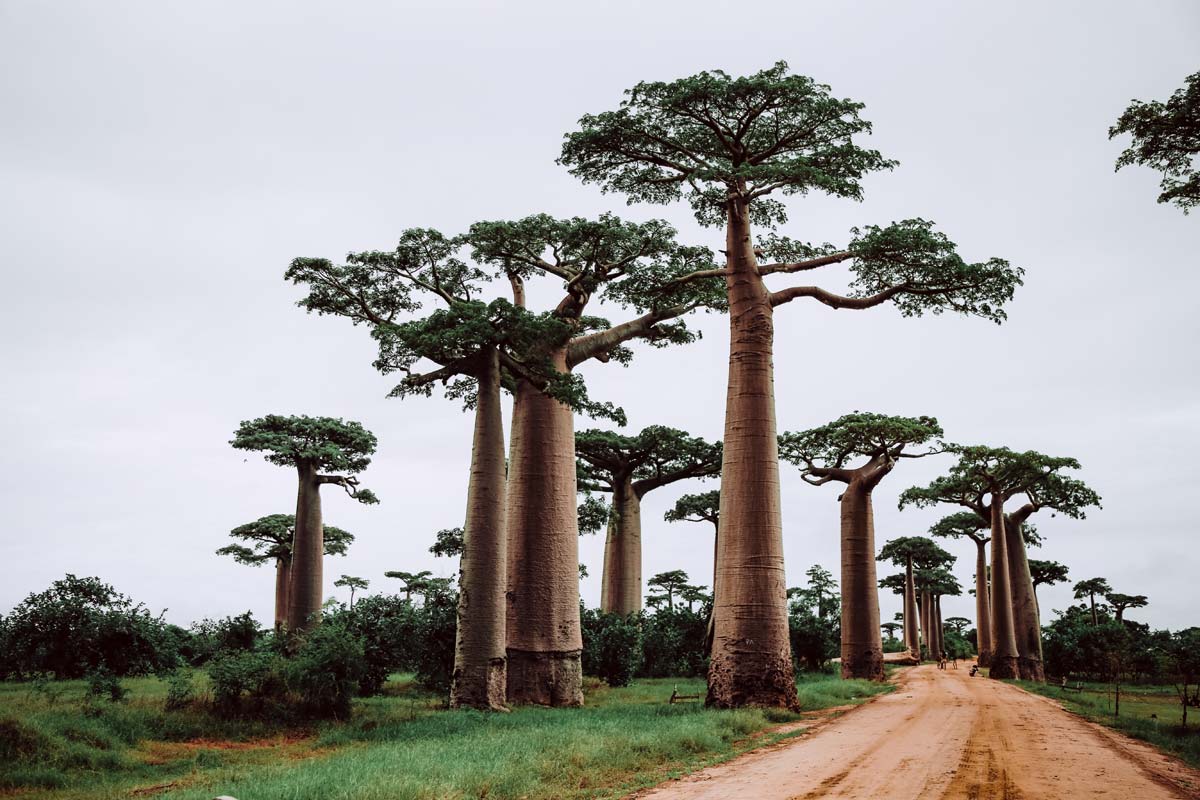
For our next attraction, we leave Africa’s shores to find one of the weirdest islands on the planet, Madagascar. Home to stunning sights such as the Avenue of the Baobabs and multiple endemic species like the ring-tailed lemur, Madagascar is an incredibly colorful place that bears a resemblance to nothing else in Africa or the world. Just one of those one-of-a-kind places that will make your trip an extra special one.
Zanzibar, Tanzania
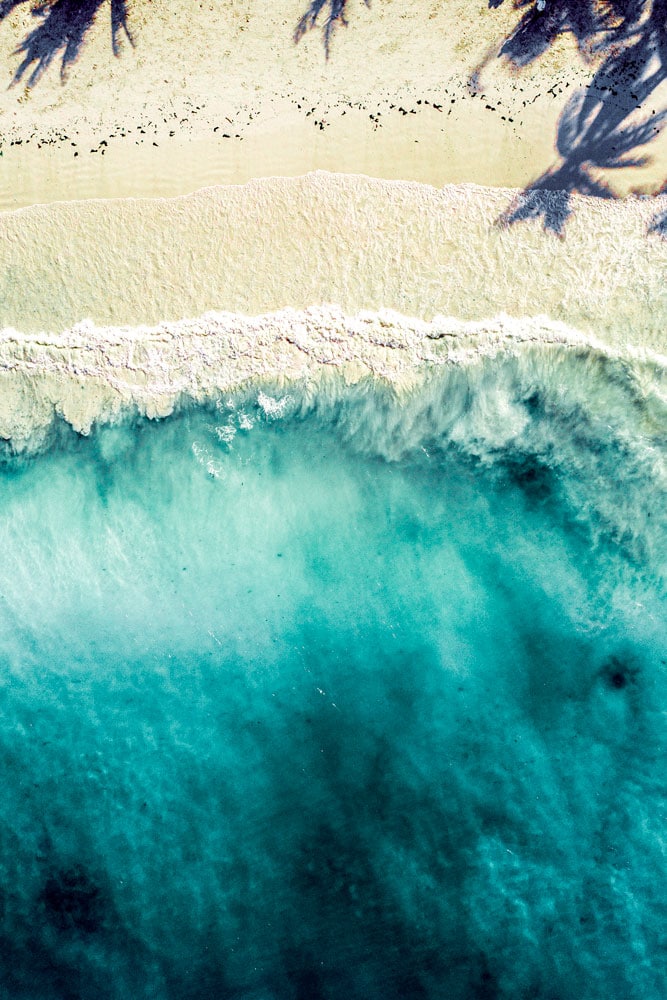
We leave the island of Madagascar to explore another island or more like an archipelago of islands, the mystical Zanzibar. Just a few miles off the Tanzanian coast, Zanzibar’s crystal waters, white-sand beaches, and vibrant culture act as a magnet for millions of tourists every year.
Having one of the most tropical sounding names, Zanzibar is also home to the picturesque Stone City and few rare creatures such as the red colobus monkey, the Zanzibar servaline genet, and the Zanzibar leopard.
Mount Kilimanjaro, Tanzania
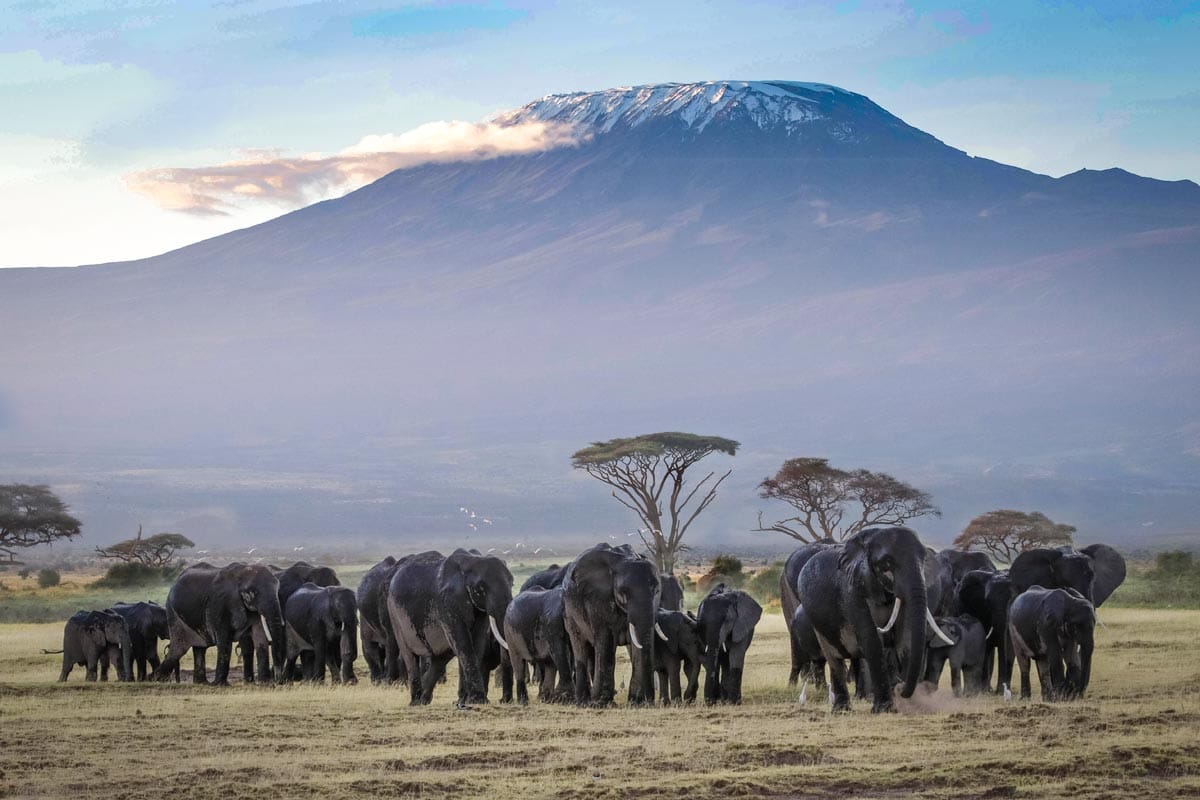
We continue discovering the top landmarks in Africa, this time on Tanzania’s mainland, where we find the most famous mountain on the continent, Kilimanjaro.
Rising majestically over the African plains, Mount Kilimanjaro is 5,895 meters tall (19,341 ft), making it the highest free-standing mountain in the world.
Considering the fact that nearly 25,000 people attempt to climb it, the tallest mountain of Africa features on many travel bucket lists. Well deserved if you ask me.
See Also: Top 20 Biggest Landmarks in Asia
Serengeti National Park, Tanzania
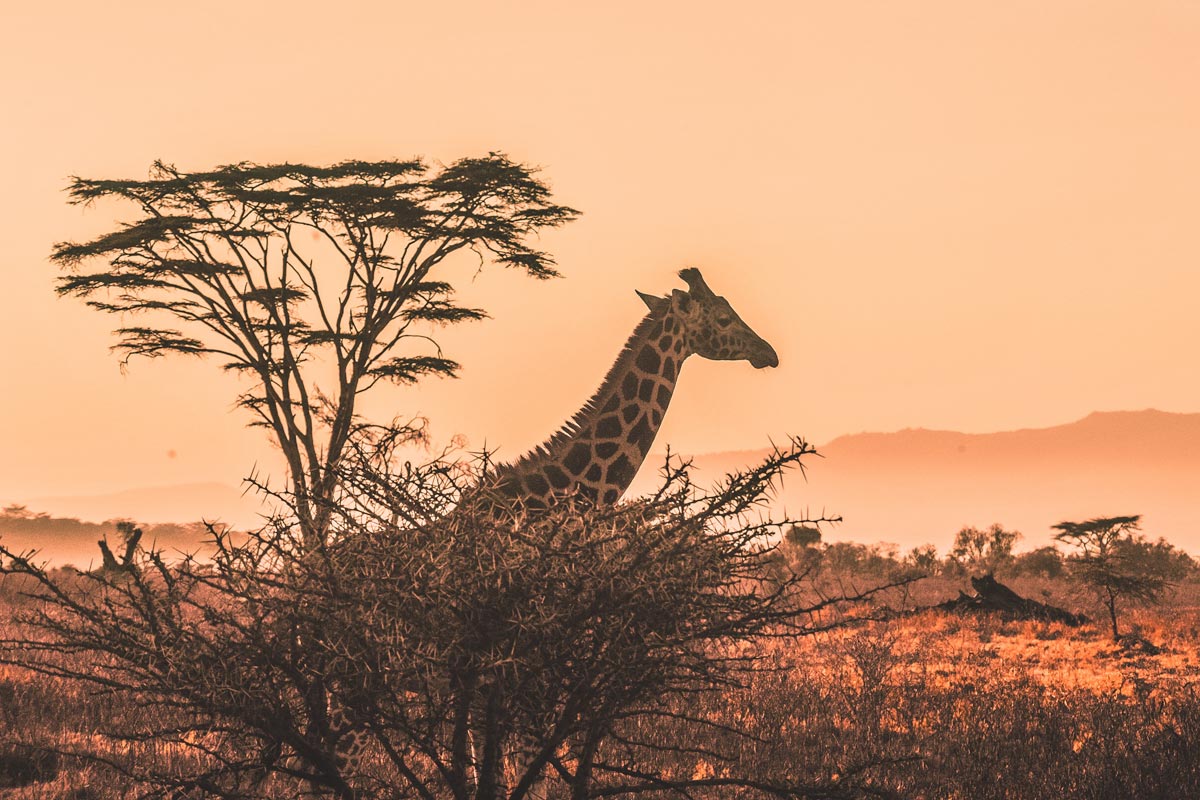
We continue our trip around Tanzania with another legendary natural treasure site – Serengeti National Park. Hosting one of the oldest and most scientifically essential ecosystems on the planet, barely anything of Serengeti’s flora and fauna had changed over the past million years. Exploring this incredible national park is as closest to a walk-back-in-time as possible.
The name Serengeti derives from the Maasai word siringit, meaning endless plains.
Apart from the brutally poached rhinos and slowly declining hunting dogs, you can observe every African savanna mammal in Serengeti, making it the go-to place for every wildlife enthusiast.
Masai Mara National Reserve, Kenya
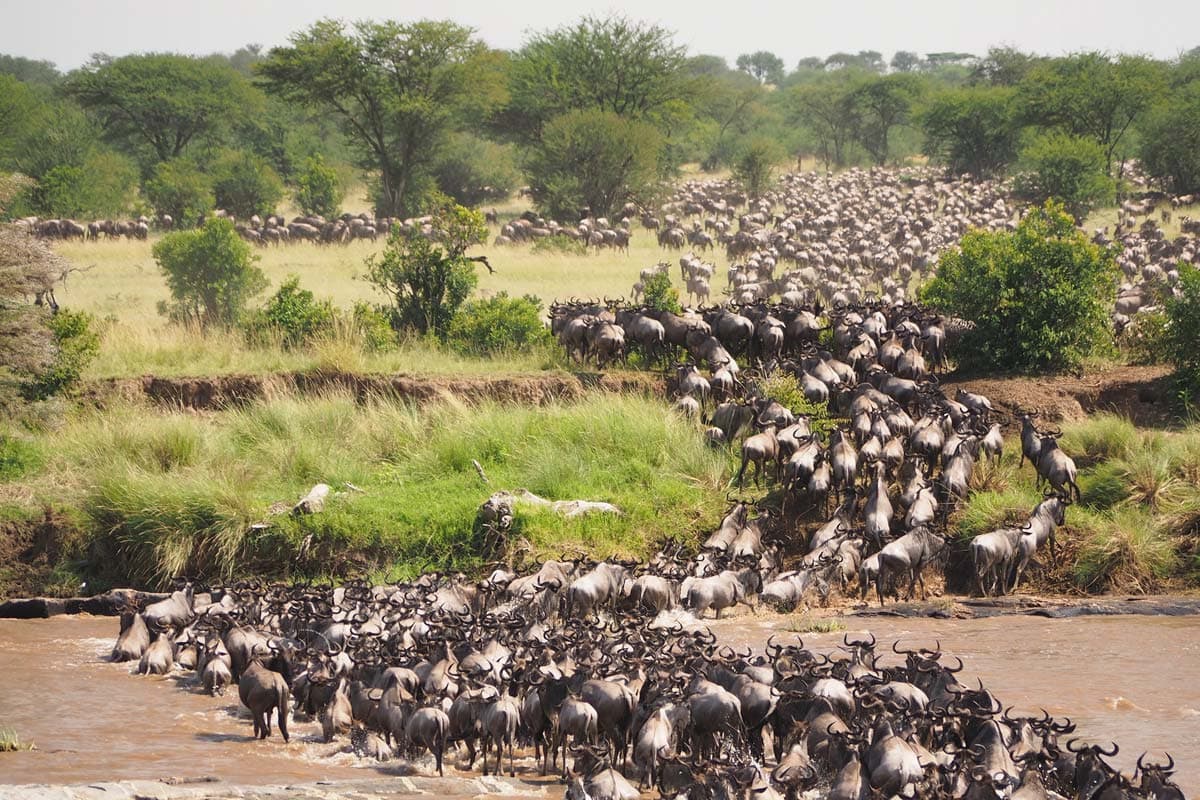
Speaking about Serengeti, we can’t fail to mention Masai Mara. Located in nearby Kenya, Masai Mara is, alongside Serengeti, part of the biggest wildlife show on Earth – the Great Migration.
Starting in March, around 1.7 million wildebeest, 500,000 zebra, and 200,000 antelope make their way down to Masai Mara for the annual cycle of rains and fresh grasses. Imagine spectating from a hot air balloon 2,5 million animals moving as one! Absolutely insane! This is undoubtedly one of those sights that will make you question what planet you are on.
Kruger National Park, South Africa
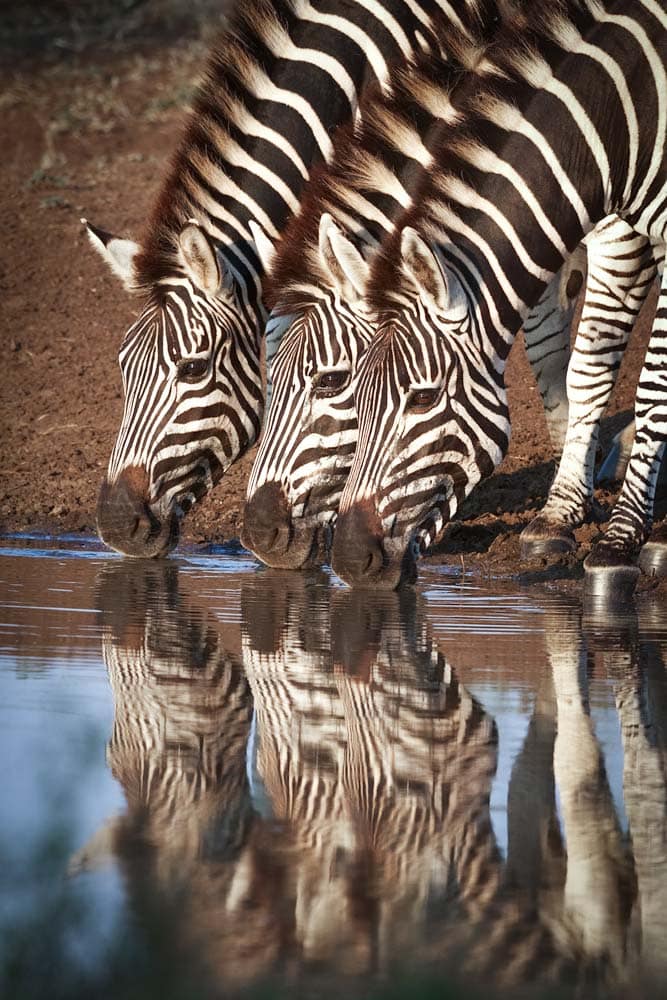
We finish Africa’s best national parks with South Africa’s finest. Welcome to Kruger Park, home to 12,000 elephants, 27,000 African Buffalo, 1,000 leopards, and a few hundred wildlife photographers (don’t quote me on the last one).
A national park since 1926, Kruger is the oldest of its kind in Africa and one of the first that realized the value of tourism. Today the parks welcome more than 1,6 mln tourists per year, making it one of the most popular parks on the continent (where every country has at least one).
Table Mountain, South Africa
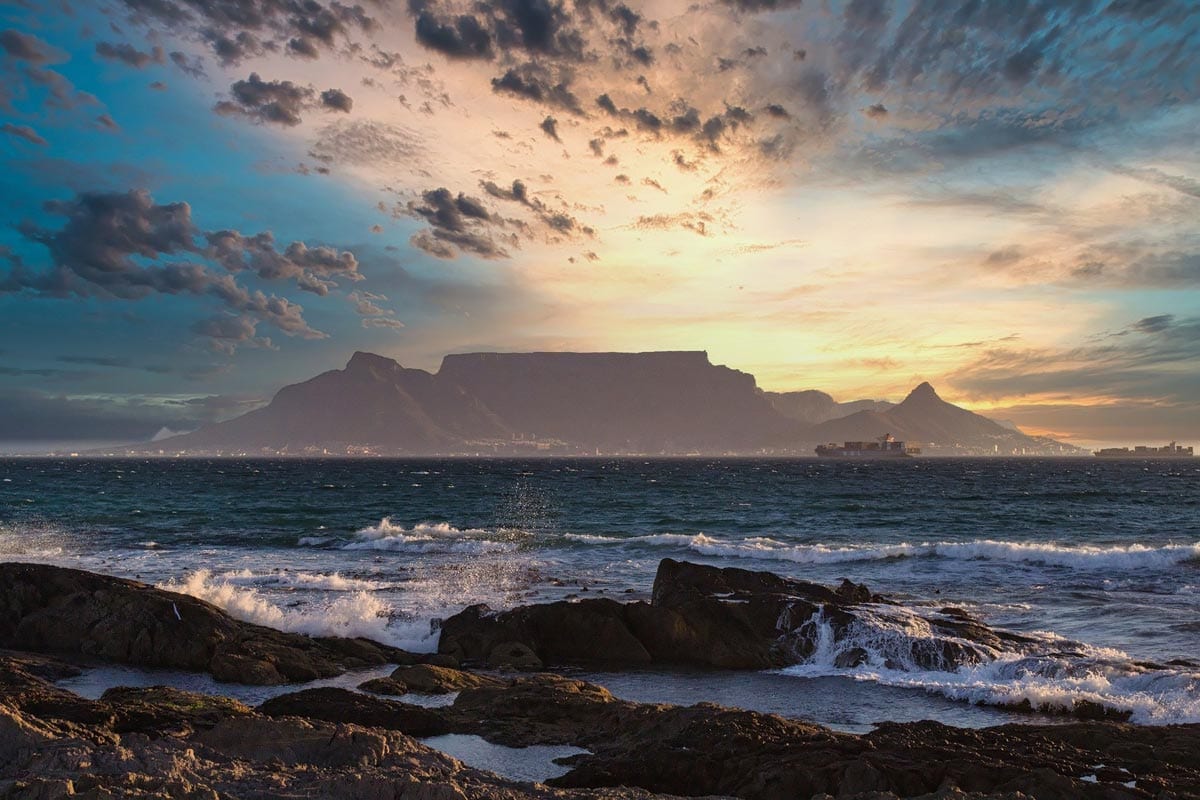
Next on the list, we got another mountain. Cape Town’s iconic flat-topped mountain is accurately named Table Mountain, and it’s one of the biggest attractions in the popular South African city.
Voted as one of the New Seven Wonders of the World in 2012, the curiously shaped mountain is among the world’s oldest mountain ranges, dating almost 300 million years. It’s home to many endemic species such as the elephant-related rock rabbit and the elusive Table Mountain ghost frog.
Timbuktu, Mali
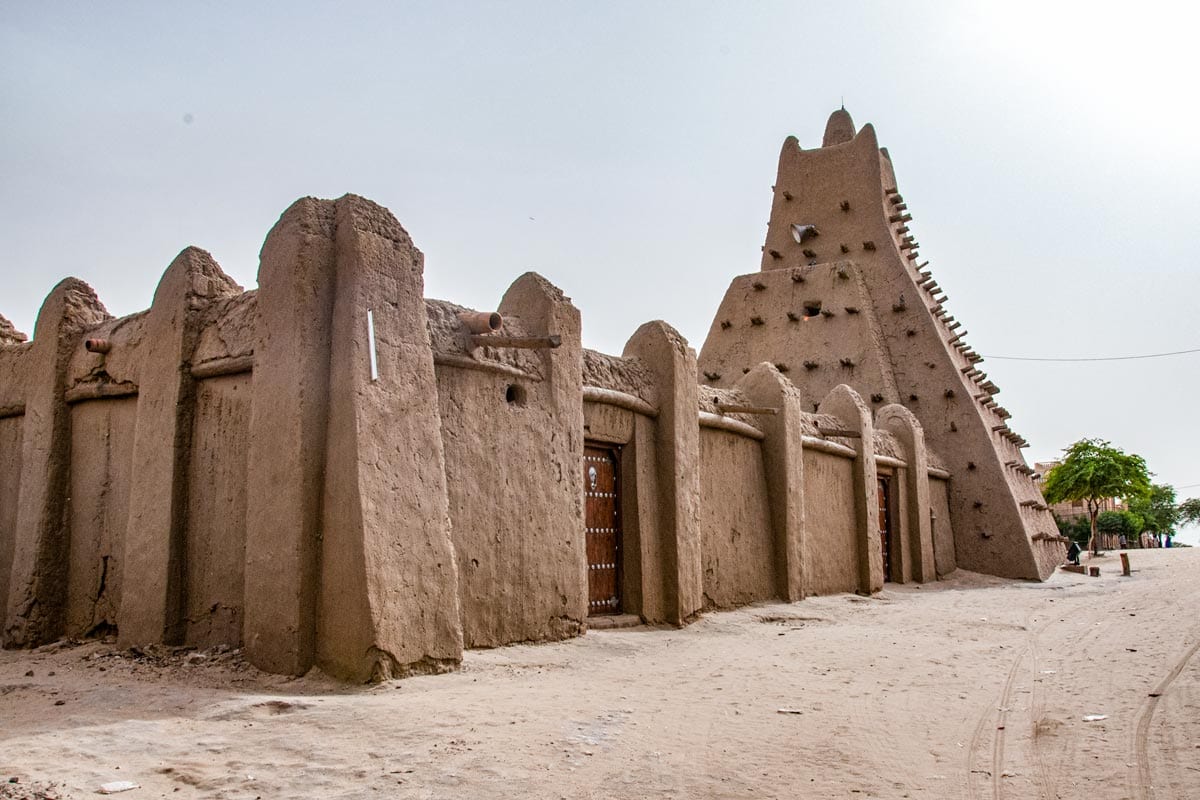
If Zanzibar has one of the most exotic-sounding names, Timbuktu has the most exotic one. A UNESCO World Heritage Site since 1998, the legendary Malian town used to be an important trading center in the area.
While the city is not that popular among tourists today, Timbuktu still has plenty to offer. It’s home to three of the oldest mosques on the continent, including the oddly-shaped Sankoré Mosque.
Lalibela Rock-hewn Churches, Ethiopia

Our search for the best landmarks in Africa leads us to Ethiopia, this time where we find an incredible man-made attraction. The Rock-hewn churches in Lalibela are like nothing else you’ve ever seen.
Dramatically stamped into the mountainous landscape, the 11 remaining constructures plunge 10m into the Earth, leaving only their cross-shaped ceiling visible to the eye.
Designated a UNESCO World Heritage Site in 1978, the churches of Lalibela are the most popular tourist attraction in Ethiopia, generating a ticket revenue of 40 million Ethiopian birrs per year (around a million USD).
See Also: The Biggest Landmarks in Oceania
Okavango Delta, Botswana

One of the world’s largest inland deltas, the Okavango delta is probably Africa’s most intriguing wildlife destination. While most rivers usually lead to an ocean, Okavango empties right into the savanna, creating a unique habitat. Home to more than 260,000 mammals and over 530 bird species, the delta is the most popular tourist destination in Botswana.
Sossusvlei, Namibia

We end the biggest landmarks in Africa with Namibia’s incredibly picturesque salt and clay pan. Situated in the southern region of the Namib Desert, Sossusvlei is surrounded by giant red dunes that combine marvelously with the bleached white pans, dead threes, and deep blue sky to create the most iconic picture of Namibia.
A dream site for every landscape photographer, Sossusvlei is as extraterrestrial as it gets and a perfect way to cap the very best African attractions.
That’s all from me, I hope you enjoyed the biggest landmarks in Africa.
————————————
If you haven’t planned your trip there yet, find out how I plan my trips!
————————————
I have 304 bucket list ideas for Africa. See my impossible bucket list of 1700+ adventures!
How many landmarks have you been to?
Some of the above are affiliate links and I will earn a percentage of the sale if you purchase through them at no extra cost to you. This helps keep my site running – so thanks in advance for your support!



